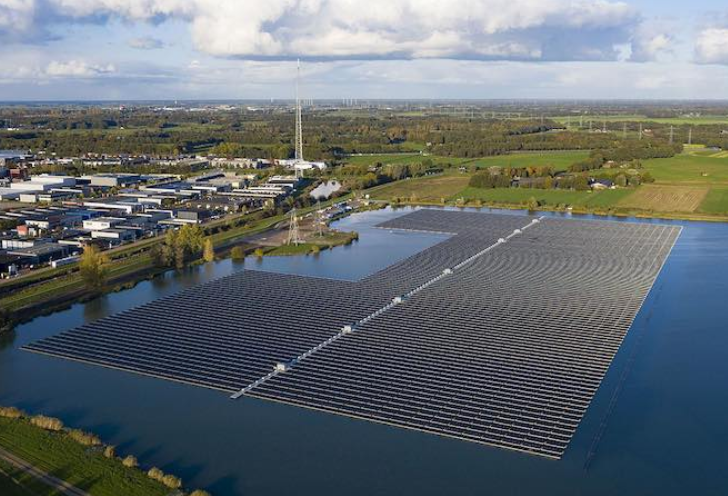
Those wondering where the Netherlands will accommodate a forecast 27GW of total installed solar PV capacity by 2030, the completion this week of the nation’s largest floating solar project offers a strong clue.
Renewables developer BayWa r.e. said on Tuesday that, along with Dutch partner GroenLeven, it had installed its third and biggest floating solar park in Holland – the 14.5MW Sekdoorn project near the city of Zwolle.
The 40,000-panel floating solar array, which has the capacity to power around 4,000 Dutch households, was installed in a “record” time of six weeks, the company said – due to its “cutting-edge, self-designed system.”
“For Sekdoorn, we have chosen glass-glass modules with aluminium frame as we are on water and those modules ensure a longer lifetime,” Ortmann told PV Magazine.
As well as the Sekdoorn project, the two companies have also installed a 2MW floating solar plant in Oosterwolde and an 8.4MW project in Drenthe. Another 27MW project is said to be in the final stages of the approvals process, and should be competed before the new year.
“In only a few months we built 25MW of floating PV projects in the Netherlands, which made us one of the biggest floating Solar developers in Europe,” said BayWa r.e.’s global head of solar projects, Benedikt Ortmann.
“We’ve proven that floating solar is technically manageable and comes with only slightly higher cost than ground-mounted systems.
“In order to optimise the Levelised Cost of Electricity (LCOE), the stability and long-life durability of the systems are absolutely key. That’s why we designed an entirely new floating plant concept together with our partners.
“We are planning to add more than 100MW of floating PV next year just in Europe,” he said.
The Netherlands Environmental Assessment Agency (PBL) predicts the nation’s installed PV capacity to have grown almost five-fold from the beginning of this year until the end of the next decade.
An additional 5GW of solar power will have been deployed this year and next, some 15GW by 2023 and 27GW by 2030, of which around 30% will be rooftop arrays.
“I can be certain about the coming years as we have a real pipeline of accepted projects, both in subsidies and building licences,” Holland Solar president Jaap Brasma said on the sidelines of the the Solar Power Europe conference in Brussels in March.
In Europeans nations like the Netherlands, where renewables ambition is high but available land space is low, installing solar panels on man-made bodies of water like reservoirs, fish farms or dams on former mine sites, is shaping us as a major opportunity for renewable energy developers.
BayWa points to a recent study by the Fraunhofer Institute for Solar Energy Research that put the potential for floating PV on decommissioned coal mining lakes at 15GW – in Germany alone. Another World Bank Group study identified a potential for of 20GW of floating solar across Europe, if only 1 per cent of the surface of man-made freshwater reservoirs was used.
“As well as our pipeline in the Netherlands, we are already working on floating PV projects in Germany, France, Italy and Spain – the potential in Europe is indeed significant,” BayWa’s Ortmann said.